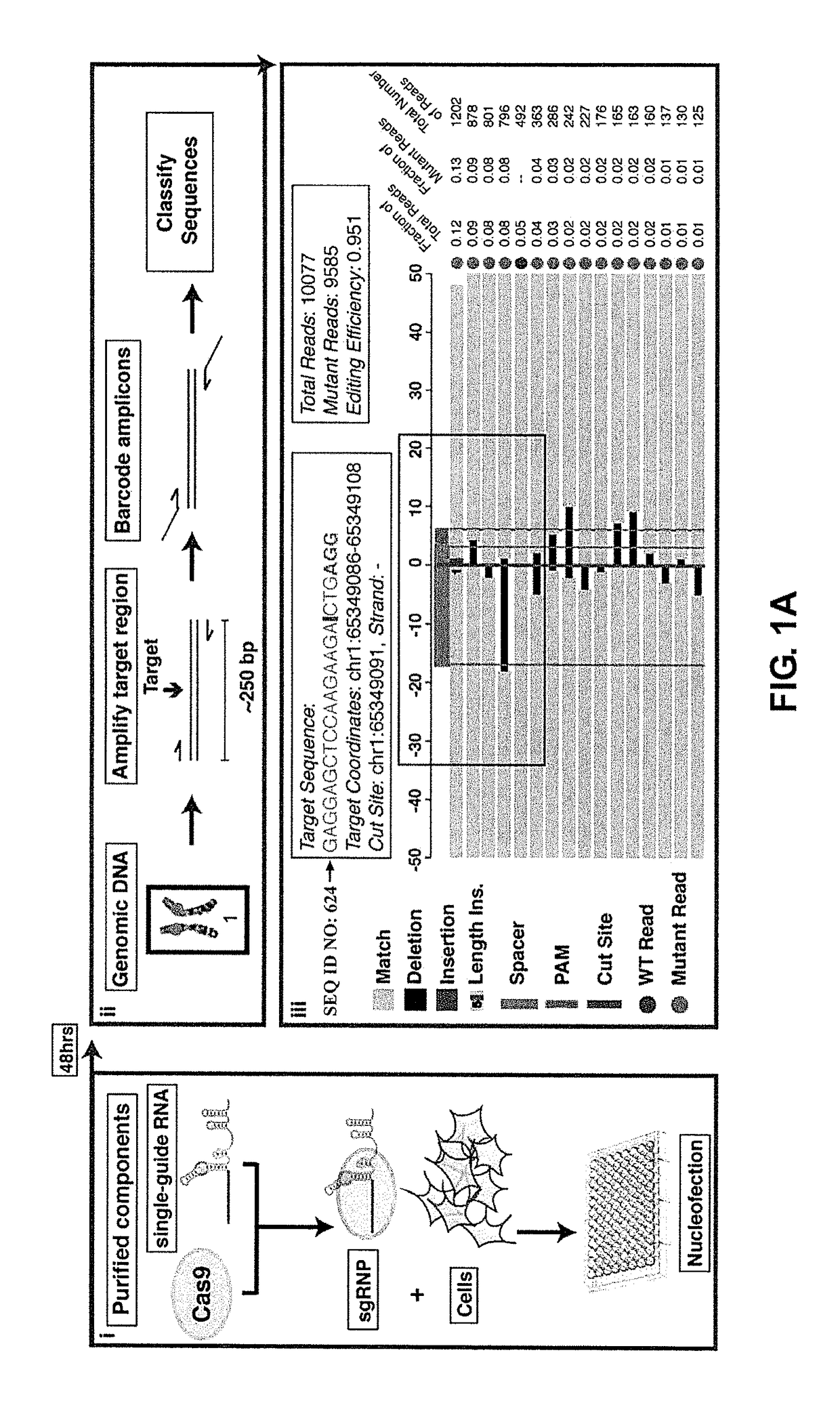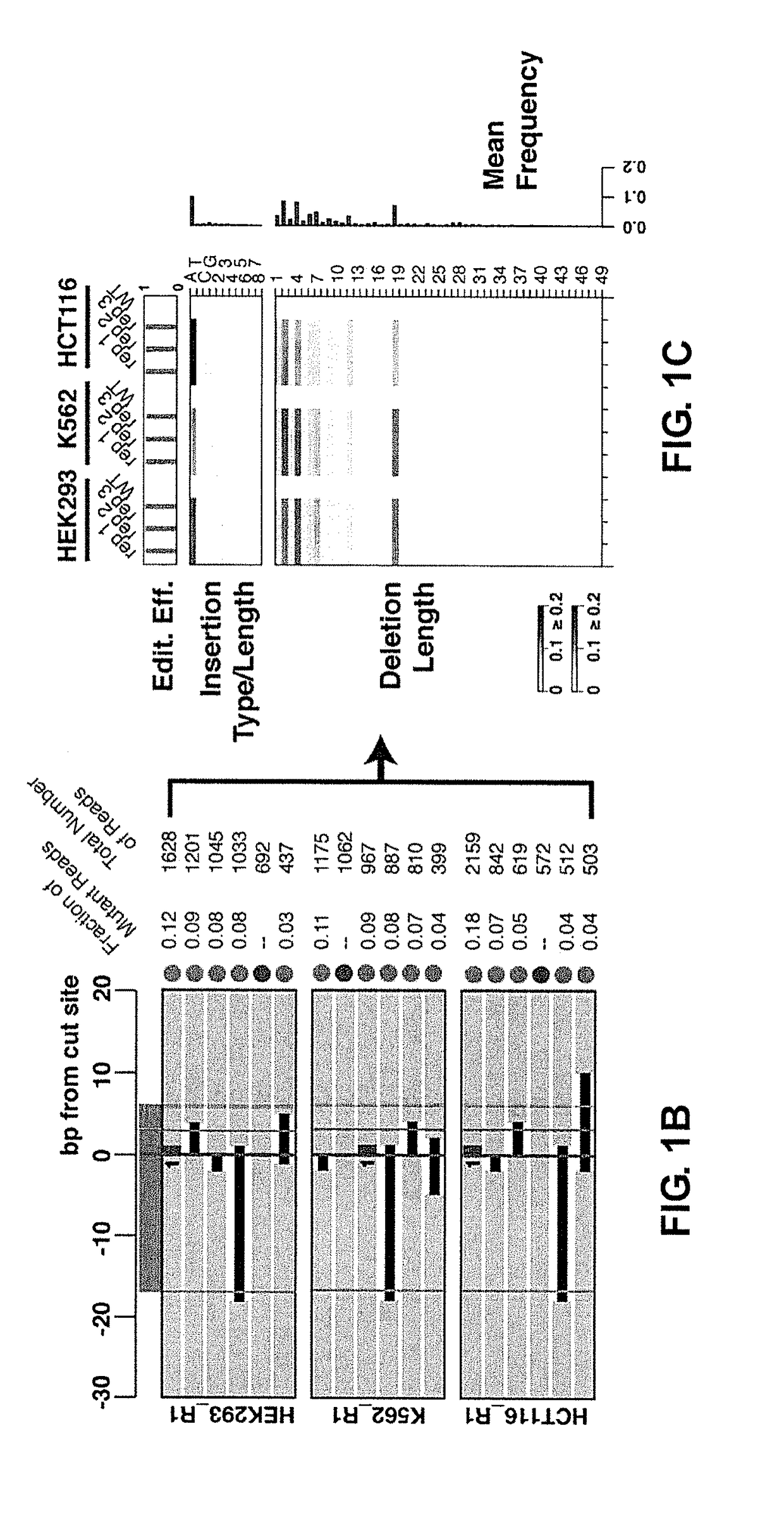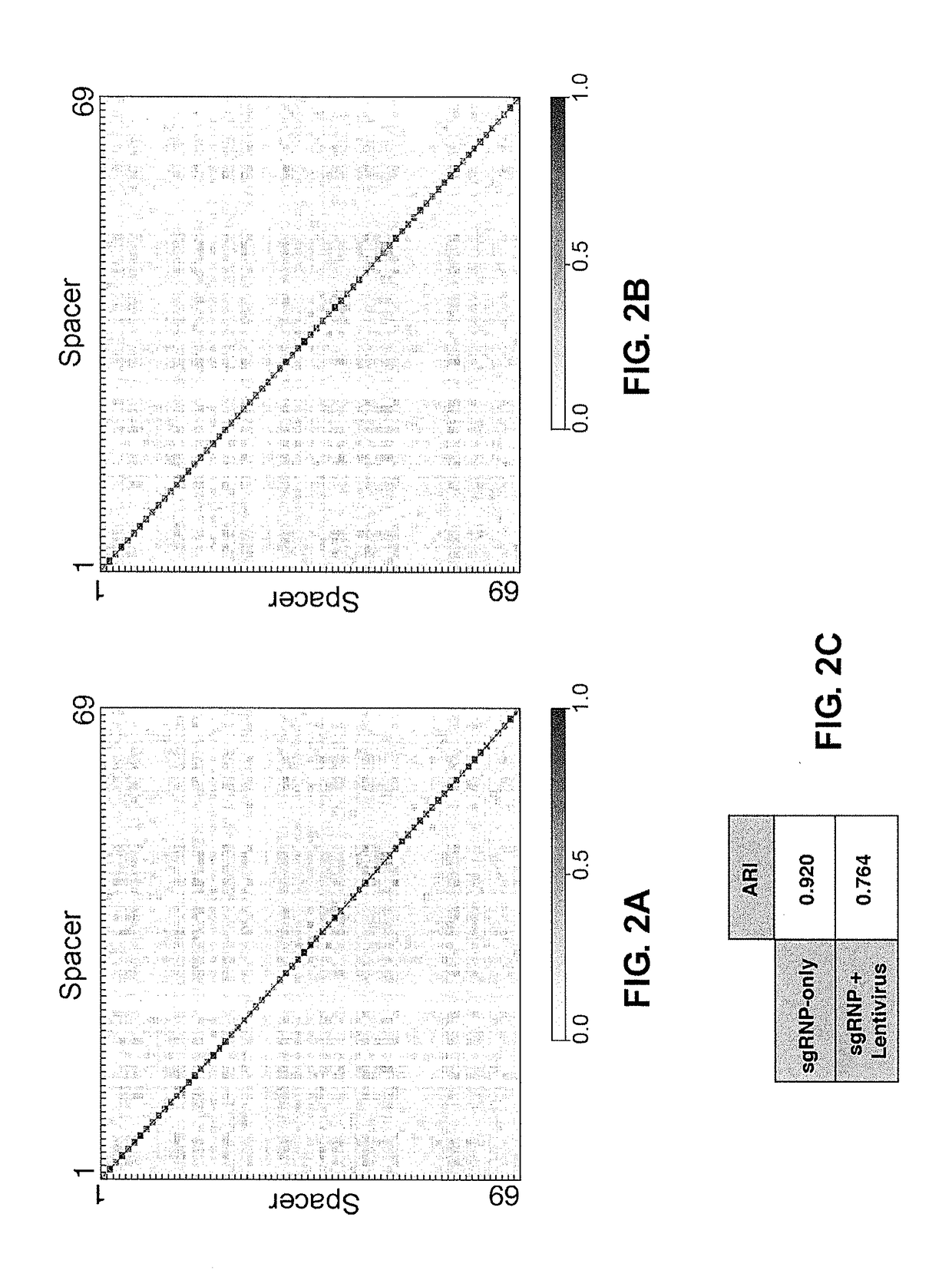METHODS FOR USING DNA REPAIR FOR CELL ENGINEERING (as amended)
- Summary
- Abstract
- Description
- Claims
- Application Information
AI Technical Summary
Benefits of technology
Problems solved by technology
Method used
Image
Examples
example 1
DNA Repair Outcomes at Cas9 Breaks
[0221]The repair outcomes following Cas9 cleavage of double-stranded DNA, which result in blunt end products (Gasiunas et al., “Cas9-crRNA ribonucleoprotein complex mediates specific DNA cleavage for adaptive immunity in bacteria” Proc. Natl. Acad. Sci. U.S.A. (2012) 109:E2579-86; Jinek et al., “A programmable dual-RNA-guided DNA endonuclease in adaptive bacterial immunity,” Science (2012) 337:816-821), were profiled using computational tools developed to categorize indels from our cell-based assay. Results are shown in FIGS. 1A-1C.
[0222]To this end, HEK293 cells were transfected with pre-assembled complexes of Cas9 protein and sgRNA (single-guide RNA ribonucleoprotein complexes (sgRNPs)) (Lin et al., “Enhanced homology-directed human genome engineering by controlled timing of CRISPR / Cas9 delivery” Elife (2014) 3:e04766.2014; Schumann et al., “Generation of knock-in primary human T cells using Cas9 ribonucleoproteins” Proc. Natl. Acad. Sci. U.S.A. (...
example 2
DNA Repair Signatures after Cas9 Cleavage
[0226]The characteristic patterns of DNA repair outcomes observed for different target sequences could be the consequence of either sequence-dependent or genomic context-dependent factors. To distinguish between sequence and context dependence, a series of sgRNAs were designed such that the spacer sequence of each sgRNA perfectly matched multiple locations in the human genome (multiple target single spacer; MTSS), whereas the sequences flanking the protospacer ensured that each of these sites could be amplified uniquely by PCR (Tables 3; 4A; and 4B). Twenty-two spacer sequences were selected that met these criteria; the targeted sequences each occur 2-14 times in the genome, providing a total of 127 sites for analysis (FIGS. 3A-3F). Consistent with the initial observations, distinct patterns of the highest frequency indel classes were conserved across experimental replicates at each of the individual sites (FIGS. 3B, 10A). Furthermore, the DN...
example 3
Distribution of DNA Repair Outcomes after Cas9 Cleavage
[0229]Genome editing outcomes are determined by the DNA repair pathway that is engaged. These pathways are, in turn, influenced by cell cycle stage. MMEJ initiates with end resection at a DSB (Truong et al., “Microhomology-mediated End Joining and Homologous Recombination share the initial end resection step to repair DNA double-strand breaks in mammalian cells” Proc. Natl. Acad. Sci. U.S.A. (2013) 110:7720-7725), an activity that is dependent on CDK levels (Huertas et al., “CDK targets Sae2 to control DNA-end resection and homologous recombination” Nature (2008) 455:689-692; Huertas and Jackson, “Human CtIP mediates cell cycle control of DNA end resection and double strand break repair” J. Biol. Chem. (2009) 284:9558-9565). c-NHEJ, however, can operate throughout the cell cycle (Aylon et al., “The CDK regulates repair of double-strand breaks by homologous recombination during the cell cycle.” (2004) EMBO J. 23:4868-4875; Ira et...
PUM
| Property | Measurement | Unit |
|---|---|---|
| Mass | aaaaa | aaaaa |
| Mass | aaaaa | aaaaa |
| Mass | aaaaa | aaaaa |
Abstract
Description
Claims
Application Information
 Login to View More
Login to View More - R&D
- Intellectual Property
- Life Sciences
- Materials
- Tech Scout
- Unparalleled Data Quality
- Higher Quality Content
- 60% Fewer Hallucinations
Browse by: Latest US Patents, China's latest patents, Technical Efficacy Thesaurus, Application Domain, Technology Topic, Popular Technical Reports.
© 2025 PatSnap. All rights reserved.Legal|Privacy policy|Modern Slavery Act Transparency Statement|Sitemap|About US| Contact US: help@patsnap.com



